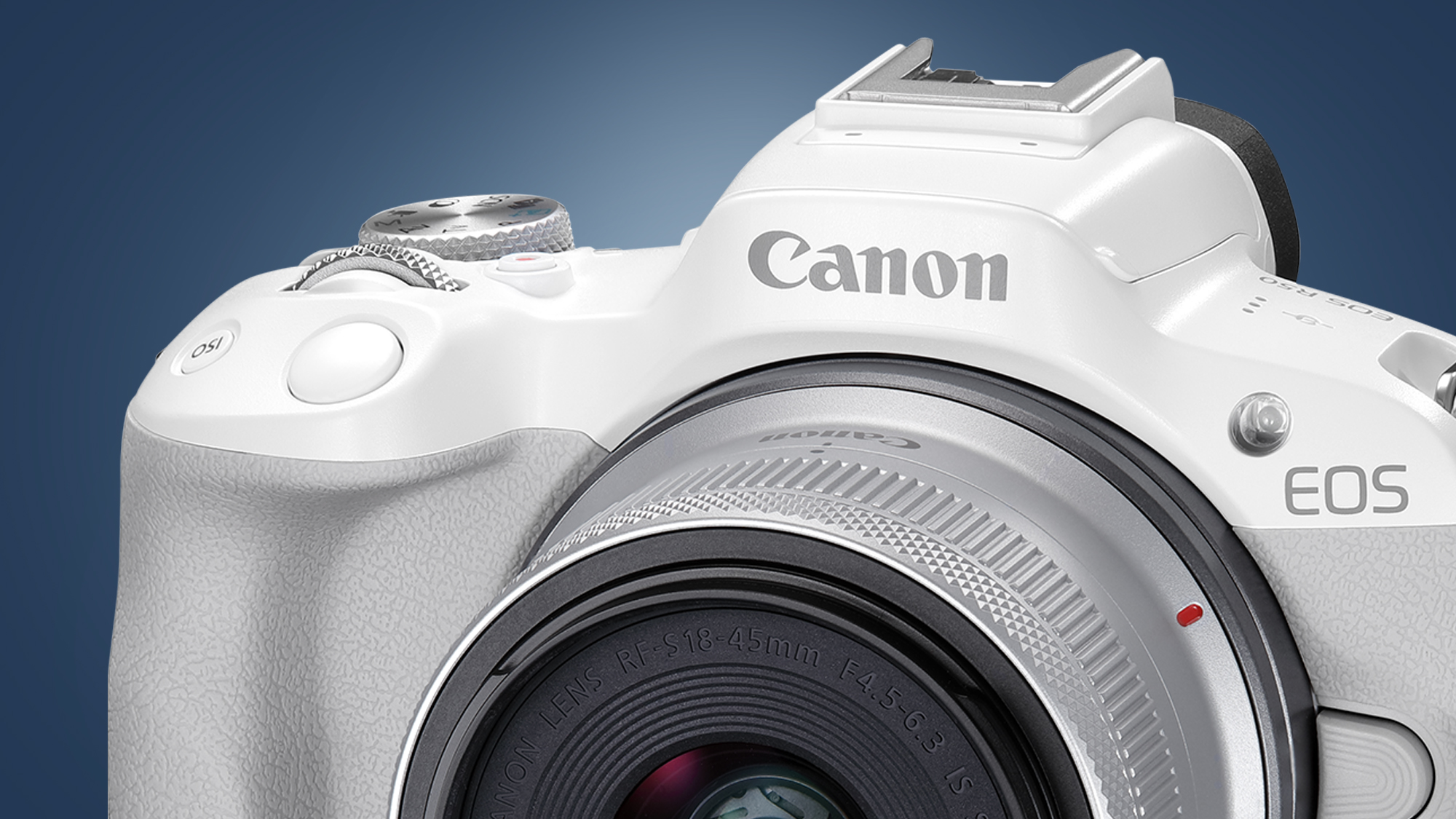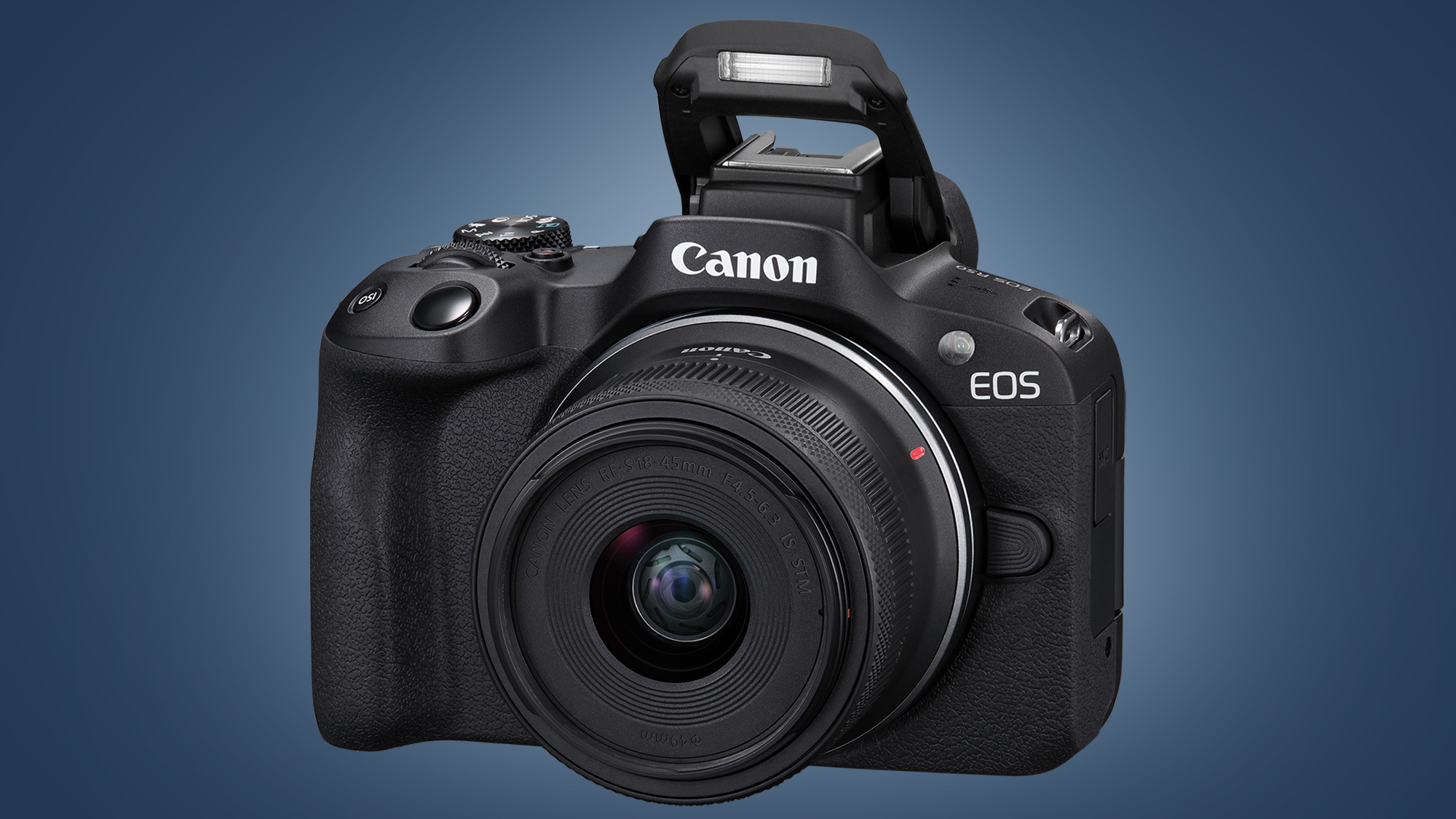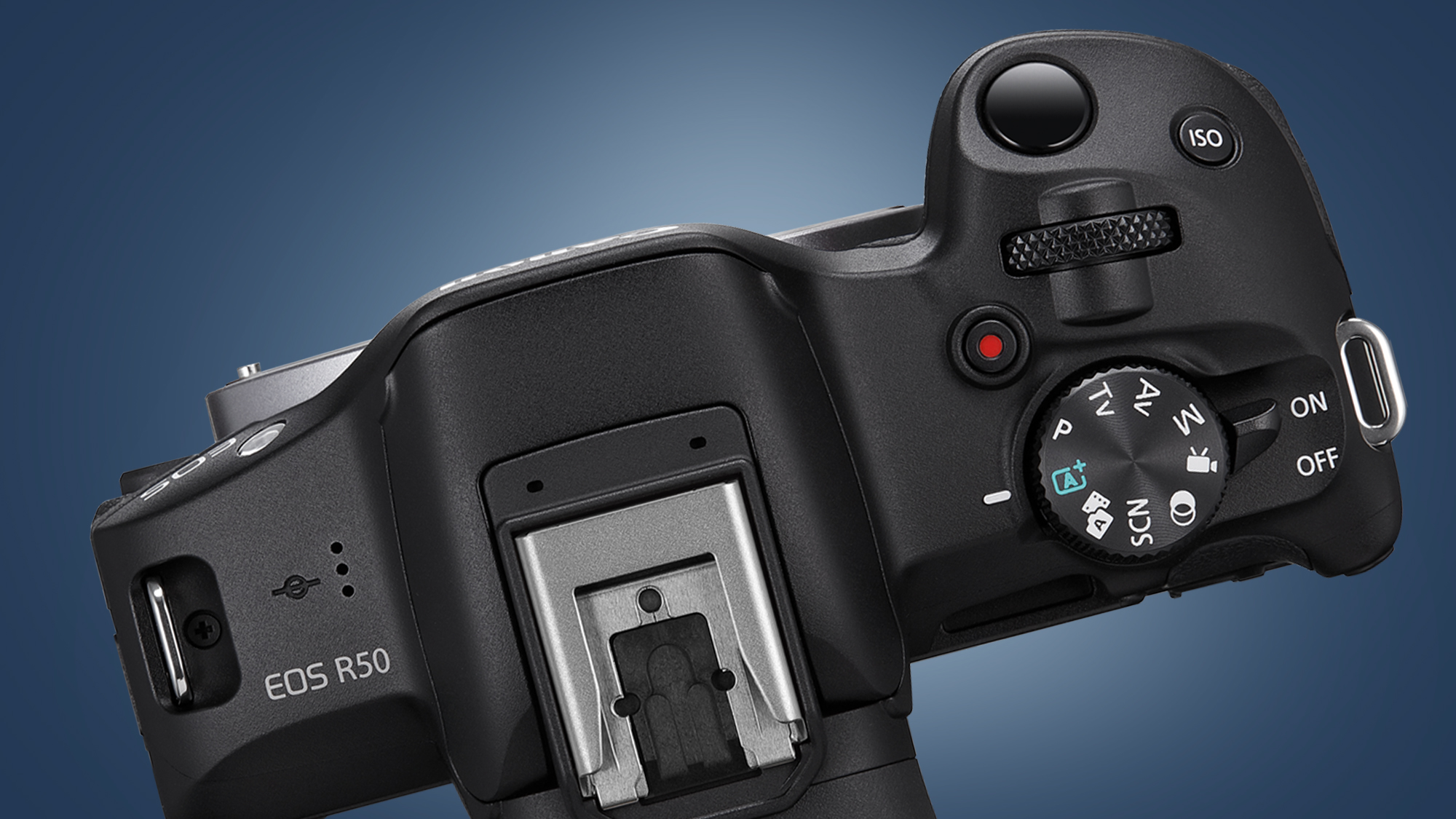The Canon EOS R50 marks an unofficial end to the hobbyist EOS M series
Opinion: Canon’s new R50 effectively retires the EOS M range

Canon’s EOS M series has been clinging on for dear life for a few years now, but the new Canon EOS R50 finally confirms it – the company’s original APS-C mirrorless camera range is now all but history.
Our hands-on Canon EOS R50 review reveals that the camera, which is fronted by Canon’s newer RF-mount, takes the hobbyist baton from the Canon EOS M50 Mark II. And it’ll hopefully take the EOS M concept further than that series has managed over the last decade.
Like the M50, the R50 is an entry-level model for beginners, and becomes the smallest and lightest camera in the EOS R system. It also effectively finishes off the EOS M series, which launched back in July 2012, for good.

This isn’t exactly a huge surprise. Canon hasn’t launched a new EOS M camera since early 2021, and the disappointing EOS M50 Mark II was effectively just a firmware upgrade of aging hardware. Canon’s first APS-C models for the EOS R system, the Canon EOS R7 and Canon EOS R10, also landed in mid-2022, another move that confirmed the EOS M range’s days were numbered.
But while the R7 and R10 are more like mirrorless reboots of Canon’s affordable DSLRs, the new EOS R50 is clearly a successor for the classic EOS M50. It has familiar looks, feels the same (slightly lighter, in fact), and has a near-identical model number. But the EOS R50 is also pricier and, despite the arrival of a new RF-S 55-210mm f/5-7.1 lens, currently shares a limitation that plagued the EOS M series: a lack of native glass.
Slow rebirth
Canon doesn’t officially discontinue camera systems, preferring to let them quietly slide into irrelevance – and it’s the same with its EOS M system.
When we asked Canon if the EOS R50 meant the end for its original APS-C mirrorless camera series, it told us “at present, we believe it is important to expand our lineup of EOS R system cameras” and that “we will continue to offer camera systems that meet the needs of our customers”.
Sign up for breaking news, reviews, opinion, top tech deals, and more.

That’s a pretty stock Canon answer – and, to be fair, some EOS M cameras are still available to buy new. Both the EOS M50 Mark II and EOS M200 are in stock in the US and UK, with the latter also available in Australia. Canon’s EF-M lenses are also in production, and are often the subject of tempting discounts (the Canon EF-M 32mm f/1.4, for example, got a hefty price cut during last year’s Black Friday sales).
But the reality that the new EOS R50 makes clear is that further development of the EOS M series has, unofficially, now ended. And this means that for hobbyists who are looking for a Canon mirrorless camera, the EOS R50 is the better future-proofed option – if you can swallow its higher price and current lack of native lenses.
Glass ceiling
Right now, the Canon EOS R50 is only compatible with three native lenses: the RF-S 18-45mm f/4.5-6.3, RF-S 18-150mm f/3.5-6.3 and the new RF-S 55-210mm f/5-7.1. There are still no prime lenses.
Compared to rival crop-sensor systems like Fujifilm’s X-series and, in particular, Micro Four Thirds, that’s pretty paltry. Canon doesn’t release official lens roadmaps, so it’s difficult to know how many are en route – and despite being around for over a decade, Canon only ever made eight first-party lenses for its EOS M system. That isn’t a great precedent for the EOS R50.
Still, other RF-S lenses, like the RF-S 11-22mm f/4.5-5.6, are rumored to be in the pipeline for launch early this year, and the EOS R50 is compatible with Canon’s pricier full-frame RF lenses. The only drawback is that those are a bit like taking professional golf clubs to a game of crazy golf.

Buying a Canon EOS R50 does bring other advantages that help to compensate for its current lack of glass. Unlike a lot of budget mirrorless cameras, it has an electronic viewfinder (EVF), which is invaluable when shooting in bright conditions. You also get the same 24.2MP sensor and Digic X processor as the Canon EOS R10.
Crucially, this means the R50 also gives you the same autofocus performance as the R10, which was a key reason why the latter rocketed to the top of our guide to the best camera for beginners. We forgave the R10 for a lack of lenses because its sticky AF tracking and subject detection were so impressive for a camera of its size and price.
The EOS R50’s subject detection will be slightly simpler than Canon’s higher-end cameras (for example, you can’t pick which eye to focus on in Eye AF mode), but if it matches the EOS R10’s performance, it could well offer good value for its relatively high £789 / $680 (about AU$1,250) price tag.
History repeating
Our retrospective of the original Canon EOS M, which launched back in 2012, called it "a half-baked warning from mirrorless camera history". Hopefully, Canon will release a lot more RF-S lenses for the EOS R50 and its APS-C stablemates.
For hobbyist camera buyers, this means Canon's entry-level models are at something of a transitional cross-roads. Older cameras like the Canon EOS M50 Mark II are cheaper (just $699 / £699 / AU$999 with a kit lens, in the M50's case) and have more native lenses. This partly explains why Canon is reluctant to discontinue the EOS M series – it still sees them as its budget mirrorless options.

But those cameras are also based on technology that's almost five years old, and for that reason it's hard to recommend them today unless you're on a very tight budget. As our hands-on Canon EOS R50 review states, "the EOS R50 is a capable snapper, and perfect for a beginner who wants the camera to do the lion’s share of the work when taking pictures".
For now, that does help to compensate for a lack of RF-S lenses – but we hope Canon doesn't repeat the mistake it made with its EOS M series. Those original APS-C mirrorless camera series serve as a reminder that great cameras still need a great lens system – particularly when, in the case of the RF-mount, it seemingly remains closed to third-party manufacturers.

Mark is TechRadar's Senior news editor. Having worked in tech journalism for a ludicrous 17 years, Mark is now attempting to break the world record for the number of camera bags hoarded by one person. He was previously Cameras Editor at both TechRadar and Trusted Reviews, Acting editor on Stuff.tv, as well as Features editor and Reviews editor on Stuff magazine. As a freelancer, he's contributed to titles including The Sunday Times, FourFourTwo and Arena. And in a former life, he also won The Daily Telegraph's Young Sportswriter of the Year. But that was before he discovered the strange joys of getting up at 4am for a photo shoot in London's Square Mile.